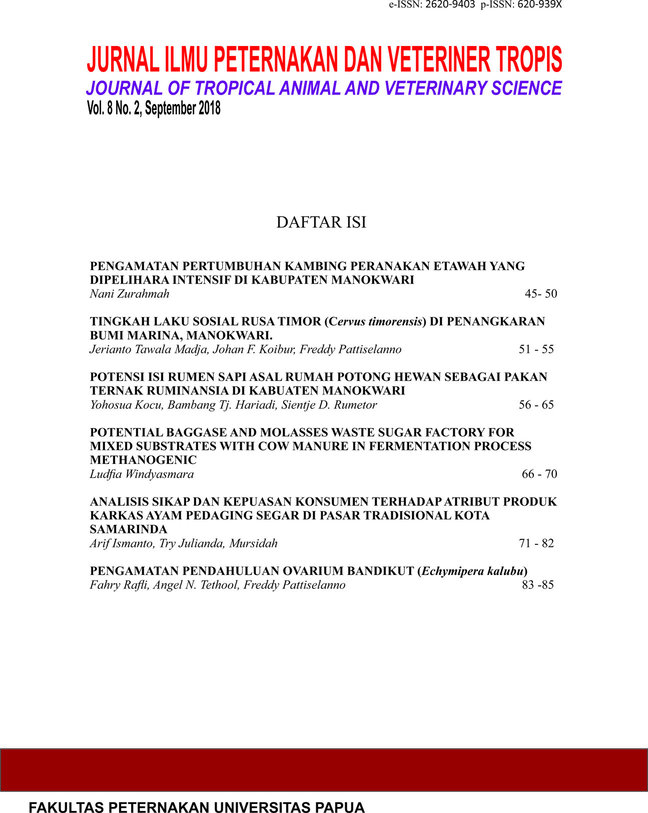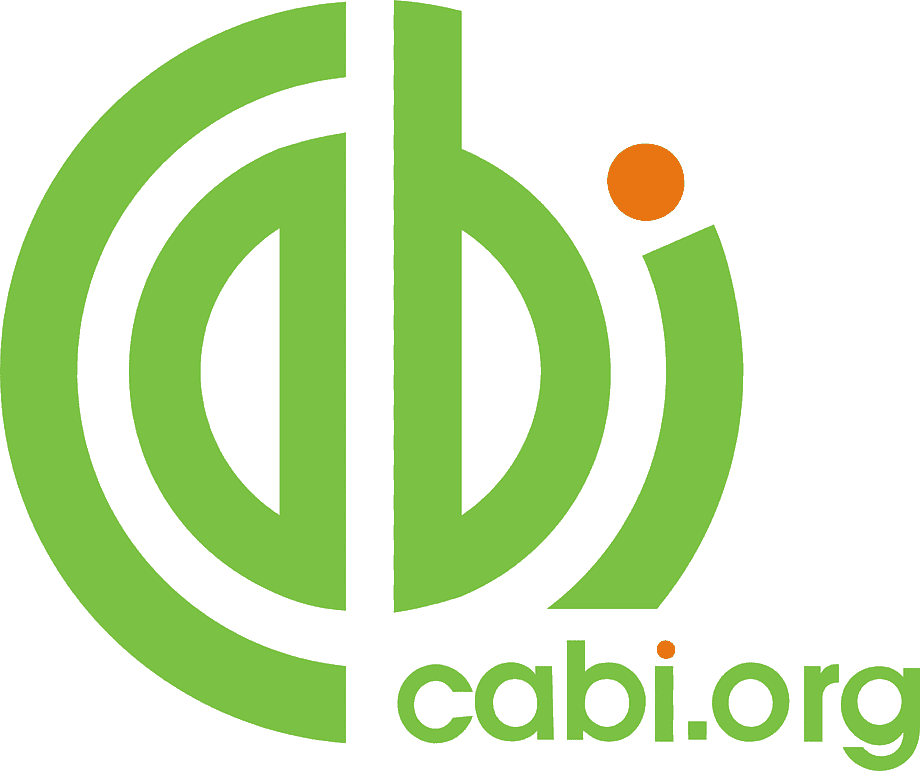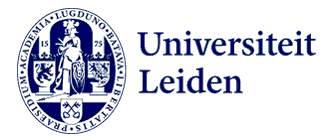POTENTIAL BAGGASE AND MOLASSES WASTE SUGAR FACTORY FOR MIXED SUBSTRATES WITH COW MANURE IN FERMENTATION PROCESS METHANOGENIC
DOI:
https://doi.org/10.30862/jipvet.v8i2.19Keywords:
Cow manure, Baggase, Molasses, Methanogenic fermentationAbstract
This study aims to analyze the potential of the sugar mill waste, namely baggase and molasses as a mixture of cow manure as a substrate in a methanogenic fermentation. This study uses 4 treatment that is P0 as controls (100% cow manure), later in other treatment using a mixture of cow manure comparison: baggase: molasses, P1 (50:20:30), P2 (50:30:20) and P3 ( 50: 40; 10). Parameters measured were nitrogen, carbon, ratio C / N and pH value. The analyze used in this research is statistic analysis. The results were obtained P3 which is a mixture of substrate (50:40:10) has an average value of the content of nitrogen, carbon, ratio C / N, and high pH value is compared to the other treatments. Ratio C / N at P3 of 24.47 closest Ratio C / N ideal for methanogenic fermentation which amounted to 25. The pH value of the treatment amounted to 7.05 billion P3 also meet the standards for process fermentation ranging from 6.6 to 7.6.
Downloads
References
Official Agriculture Chemists Association. 2002. Official Methods of Analysis of AOAC International. IP Volume 2.5-2.37. In Horwitz, W. (Ed). Agricultural Chemicals, contaminants, Drugs. AOAC International, Maryland, USA. 17th edition.
Hartono, R. 2009. Biogas Production from Rice Straw by the addition of Buffalo Dirt. National Seminar on Chemical Engineering Indonesia - SNTKI 2009 ISBN 978-979-98300-1-2. Bandung, 19 to 20 October 2009.
Hugot. E. 1986. Sugar cane Handbook of Engineering. British
Kaparaju, P., I. Buendia, L. Ellegaard and I. Angelidakia. 2007. Effects of Mixing on Metane Production During Thermopilic Anaerobic Digestion of Manure : Lab-scale and Pilot-scale studies. In: Bioresources technology 2007. Elsevier Ltd.
Lethomaki, A., S. Hutunen, TM Lehtinen and JA Rintala. 2007. Anaerobic Digestion of Grass Silage in Leach Bed Batch Processes for Production Metane. Bioresources Journal 2007.04.072 Technology. Elsevier Ltd
Musyafa. 2004. Soil macrofauna Role in the Process of Litter Decomposition of Acacia mangium Willd. ISSN: 1412-033X. Number January 1,2005. Biodiversity Volume 6, Number 1 Page: 63-65
Sugar Plantation Research Center (P3GI). 2012. Waste Bagasse of Sugar Factories in Indonesia.
Shuler, M. L. and F. Kargi. 2002. Bioproses Engineering. Second ed. Prentice-Hall, Inc., USA.
Siallagan, R. 2010. Pengaruh Waktu Tinggal dan Komposisi Bahan Baku Pada Proses Fermentasi Limbah Cair Industri Tahu Terhadap Produksi Biogas. Fakultas Teknik Program Magister Teknik Kimia Universitas Sumatera Utara Medan.
Simanjuntak, Riswan. 2009. Study of Making Ethanol from sugar waste (molasses). Thesis.USU: Medan.
Downloads
Published
How to Cite
Issue
Section
License
License and Copyright Agreement
In submitting the manuscript to the journal, the authors certify that:
- They are authorized by their co-authors to enter into these arrangements.
- The work described has not been formally published before, except in the form of an abstract or as part of a published lecture, review, thesis, or overlay journal. Please also carefully read Jurnal Ilmu Peternakan dan Veteriner Tropis (Journal of Tropical Animal and Veterinary Science) Posting Your Article Policy at https://journal.fapetunipa.ac.id/index.php/JIPVET/publicationethics
- That it is not under consideration for publication elsewhere,
- That its publication has been approved by all the author(s) and by the responsible authorities “tacitly or explicitly“ of the institutes where the work has been carried out.
- They secure the right to reproduce any material that has already been published or copyrighted elsewhere.
- They agree to the following license and copyright agreement.
Copyright
Authors who publish with Jurnal Ilmu Peternakan dan Veteriner Tropis (Journal of Tropical Animal and Veterinary Science) agree to the following terms:
- Authors retain copyright and grant the journal right of first publication with the work simultaneously licensed under a Creative Commons Attribution License (CC BY-NC-SA 4.0) that allows others to share the work with an acknowledgment of the work's authorship and initial publication in this journal.
- Authors are able to enter into separate, additional contractual arrangements for the non-exclusive distribution of the journal's published version of the work (e.g., post it to an institutional repository or publish it in a book), with an acknowledgment of its initial publication in this journal.
- Authors are permitted and encouraged to post their work online (e.g., in institutional repositories or on their website) prior to and during the submission process, as it can lead to productive exchanges, as well as earlier and greater citation of published work.

This work is licensed under a Creative Commons Attribution-NonCommercial-ShareAlike 4.0 International License.





























.png)
